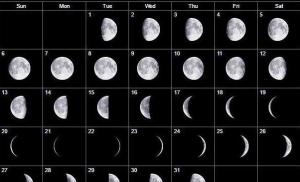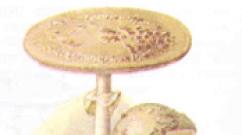Anne Valley Queen of England. Anna Stewart - biography, facts from life, photographs, background information
On March 8, 1702, after the death of King William III of Orange, Queen Anne Stuart ascended to the English throne. She became the last representative of this family on the English throne and the first monarch of the united kingdom of England, Scotland and Ireland (Great Britain).
Anna was born during the reign of her uncle Charles II, who had no legitimate children, into the family of the Duke and Duchess of York. Her father James was first in the line of succession to the throne, but was not popular in England because he was a Catholic. Anne and her elder sister Mary, being next in the line of succession, were raised Protestant by order of Charles II. After the death of his brother, Jacob became king, but already in 1689 he was overthrown as a result of the “Glorious Revolution”. Parliament enthroned the husband of James's eldest daughter, Mary, the Protestant William III of Orange.
In 1694, Anne's elder sister, Queen Consort Mary, died, and since her marriage to William III was childless, Anne became heir to the throne and Parliament gave her the title Princess of Wales. In the same year, Anna's wedding took place with the Danish Prince George.
On March 8, 1702, King William III of Orange died of pneumonia, Anne was declared Queen of England and Scotland and crowned at Westminster. She was a kind and friendly woman, but not very understanding, indecisive and did not like to be intensely involved in government affairs. In fact, all power was concentrated in the hands of Sarah Churchill, the Duchess of Marlborough, who had great influence on Anne.
The war with France ended with the signing of a peace treaty in 1713, according to which England received Gibraltar, Minorca and a number of French colonies in North America. However, the most important event during Anne's reign was the unification of England and Scotland.
In 1701, the Scottish Parliament passed the "Act of Defense", reserving the right to elect a new monarch from among the Protestants and recall Scottish troops from the English army. Fearing that an independent Scotland would enter into an alliance with France, England threatened its northern neighbor with economic sanctions in 1705. The parties sat down at the negotiating table, and eventually adopted a resolution to unite the two countries into one - Great Britain. The historical event occurred on May 1, 1707. Scotland received sixteen seats in the House of Lords and forty-five seats in the House of Commons of the English Parliament.
Anna died on August 1, 1714, leaving no direct heirs. Of all the queen's many pregnancies, only five ended in normal births, but only one child was able to live longer than two years - William, Duke of Gloucester. However, he also died in 1700.
Her cousin Sophia was declared Anna's heir, but she died in 1714 a little earlier than Anna, and her son George of Hanover became king. The Hanoverians who ascended the British throne were not at all the most priority branch among the heirs. However, unlike the rest of the Stuarts, they were Protestants, which played a decisive role in the selection of the new king.
Anna Stewart(eng. Anne Stuart, February 6, 1665, London - August 1, 1714, London) - Queen of England, Scotland and Ireland from March 8, 1702. The first monarch of the United Kingdom of Great Britain (on May 1, 1707, the kingdoms of England and Scotland formed a single sovereign state). She remained Queen of Great Britain and Ireland until her death. The last representative of the Stuart dynasty on the English throne.
Anna was born during the reign of her uncle Charles II, who had no legitimate children. Her father James was first in the line of succession to the throne, but was not popular in England because he was a Catholic. Anna and her elder sister Maria, being next in the line of succession, were raised Protestant by order of Charles II. After the death of her brother, her father became king, but three years after his accession - in 1688 - he was overthrown as a result of the Glorious Revolution. The younger brother of Anne and Mary, the son of James II from his second marriage - the Catholic James "The Old Pretender" and his offspring were excluded from the line of succession, which sowed the seeds of several Jacobite uprisings in the future. James's eldest daughter, Queen Mary II, and her husband and cousin, the Protestant William III of Orange, ascended the throne and began to rule together.
Although the sisters were close, soon after Mary's accession to the throne, disagreements arose between them over Anne's finances, her position and her choice of dating, and they grew apart. William and Mary had no children; after Mary's death in 1694, William continued to rule independently. Anna inherited the throne after his death in 1702.
As ruler, Anne favored the policies of moderate Tories who shared her Anglican views (unlike their Whig opponents). However, the Whigs gained great influence during the War of the Spanish Succession, but in 1710 Anne removed many of them from office. She separated from her close friend Sarah Churchill, Duchess of Marlborough due to political differences.
Anna suffered from health problems all her life. After her 30th birthday, she began to limp especially severely and become obese. Despite her marriage to George of Denmark and 17 pregnancies, she died without leaving any heirs, becoming the last monarch of the Stuart family. According to the Act of Succession of 1701, the throne was inherited by George I of the Hanoverian dynasty (who was a descendant of the Stuarts through his grandmother maternal line- Elizabeth, daughter of James I).
Under Charles II
Early years
Princess Anne was born at 11:39 pm on 6 February 1665 at St James's Palace in London. She became the fourth child and second daughter of Prince James, Duke of York (later King James II) and his first wife Anne Hyde. The Duke and Duchess of York had eight children, but only Anne and Mary lived to adulthood. Her father was the younger brother of Charles II, King of England, Scotland and Ireland, and was his heir to the throne. At the same time, her mother, being the daughter of Lord Chancellor Edward Hyde, 1st Earl of Clarendon, was “no match” for the prince, becoming his chosen one during the period of exile of the Stuarts.
The newborn was baptized according to the Anglican model in the Chapel Royal at St. James's Palace. Her godparents were her elder sister Princess Mary, Duchess of Monmouth and Archbishop of Canterbury Gilbert Sheldon.
As a child, Anna suffered from an eye disease and was sent to France for treatment, where she lived with her paternal grandmother, Queen Henrietta Maria, in the Château de Colombes near Paris. After the death of the latter in 1669, Anna settled with her aunt, the Duchess of Orleans Henrietta, after whose sudden death in 1670 the girl returned to England. Her mother died the following year.
As was customary in royal families, Anne and her sister lived and were raised separately from their father on their own estate in Richmond. At the direction of the then reigning monarch, Uncle Charles II, they were raised in the Protestant tradition, despite the fact that their parents were Catholics. The children were taken care of by relatives of the Duke of Buckingham - Edward Villers and his wife Frances. Education emphasized the teachings of the Anglican Church. Bishop Henry Compton of London was appointed Anna's mentor.
(06.02.1665 - 01.08.1714)
From the Stuart dynasty, daughter of the Duke of York (future Catholic King James II) from her first marriage to Anne Hyde. Like her older sister Maria II, Anna did not convert to Catholicism, was married to a Protestant prince (George of Denmark) and enjoyed the sympathy of Protestants - opponents of her father.
After the Glorious Revolution of 1688, which overthrew James and deprived his newborn son and namesake, the Prince of Wales, from the throne, with the support of her close friend Sarah Churchill, according to the Bill of Rights, Anne became the heir of her sister Mary and her husband William III of Orange if they will not leave children.
Indeed, the marriage of Mary (who died in 1694) and William (who became the sole king after her death, but did not marry again) turned out to be childless. But Anna herself turned out to be an unlucky mother: having had 18 pregnancies with George, she gave birth to only 5 children alive, of which 4 died in infancy. Her only remaining child, William, Duke of Gloucester, died on July 29, 1700, at the age of eleven. This could lead to a political crisis: the Protestant line of the House of Stuart was cut short by Anne (theoretically, after her, the throne could pass to William's offspring if he married again, but he did not intend to remarry), and her father (who was still alive at that time) ) or her Catholic brother could easily re-seize the throne.
Under these conditions, the Act of Succession to the Throne (1701) was adopted, according to which Catholics (or persons married to them) were in principle eliminated from the order of succession to the English and Scottish crowns, and the granddaughter of James I, Sophia of Hanover, became the heir to the throne after Anna. then her eldest son, Elector of Hanover George I.
Anna was unhappy with this decision, taken under pressure from parliament; she did not want to give up the British crown to petty German rulers and dreamed of bequeathing the throne to her young brother Jacob, who lived in France and whom she had never seen.
On March 8, 1702, William III died and Anne assumed the throne. Her reign is characterized by a weakening of the role of the monarch and the strengthening of ministers. This was due to the poor health and dependent nature of the queen, as well as general trends to the limitation of royal power after the Glorious Revolution.
At this time, Britain actively participated in the War of the Spanish Succession in the camp of opponents of France ( Louis XIV recognized the applicant, Anne's brother, as "King James III"). One of the most influential figures of her reign was the commander and commander-in-chief of the state's troops, John Churchill, Duke of Marlborough, whose wife was Anne's friend. Marlborough favored the Whig party; Pursuing a policy of nepotism, he appointed his relatives, Godolphin and Sunderland, to key positions in the government.
Under Anne, measures were taken to completely eliminate Scottish independence. Given the change in the order of succession, the Scots were not going to recognize the future king of England as their monarch, but believed that after Anne's death the Scottish Parliament should elect another prince from the House of Stuart.
In addition, the traditional “old alliance” (Auld Alliance) between France and Scotland, as well as France’s support for the pretender to the English throne, the son of James II, who was popular in Scotland, also posed danger in a war with France. Under these conditions, the “Act of Union” was prepared, which provided for the unification of England and Scotland into a state called Great Britain; Under military and economic pressure, the Scottish Parliament passed this act on January 16, 1707 and dissolved itself. On May 1, 1707, England and Scotland ceased to exist as states, and the history of Great Britain began.
By the late 1700s, the personal relationship between Anne and her friend the Duchess of Marlborough had deteriorated. The political opponents of the latter’s husband took advantage of this to undermine his position. In 1710, all prominent supporters of Marlborough (but not himself) were removed from office, especially since due to the unpopularity of the war, which cost many lives and money, elections to the House of Commons brought a majority to the Tory party. In 1711, when Marlborough tried to delay negotiations to end the war, Anne finally dismissed him, and in order to deprive the Whigs of the majority in the House of Lords, she awarded 12 peerages in one day. Over almost 50 years, Elizabeth I conferred fewer peerage titles than Anne did in that one day. All this political struggle was accompanied by constant petty intrigues for influence on the queen and her closest friends. In 1713, the War of the Spanish Succession ended with the generally successful Peace of Utrecht for Great Britain, according to which the country acquired some French colonies in America.
Anna died of chronic gout on August 1, 1714. Since Sophia of Hanover died two months before her (June 8), the latter’s eldest son, Elector of Hanover George, who became King George I of Great Britain, ascended the throne. In accordance with the Act of Succession to the Throne, more than 50 persons who were genealogically older than George were bypassed from -for their Catholicism.
Anne's time was a period of significant flowering of culture and science and the formation of the British Enlightenment. During her time, Daniel Defoe, Alexander Pope and Jonathan Swift worked, and Isaac Newton worked.
Queen Anne is a character in Scribe's play A Glass of Water. In the Soviet film adaptation, this role was played by Natalya Belokhvostikova.
Anna Stewart. Reproduction from the site http://monarchy.nm.ru/
Anne Stuart (6.II.1665 - 1.VIII.1714) - Queen of Great Britain and Ireland since 1702, daughter of James II. She ascended the throne in accordance with the Act of Succession to the Throne (1701), which significantly limited the rights of the crown. Under Anne Stewart, an order began to emerge according to which the government was to be formed from the leaders of the party (Whigs or Tories) that predominated in the House of Commons.
Soviet historical encyclopedia. - M.: Soviet Encyclopedia. 1973-1982. Volume 1. AALTONEN – AYANY. 1961.
Literature: Tatarinova K.N., Essays on the history of England 1640-1815, M., 1958; Paul H., Queen Anne, new ed., L., (1912); Trevelyan G. M., England under Queen Anne, v. 1-3, L. (a. o.), 1930-34.
Anna Stewart
Anne Stuart
Years of life: February 6, 1665 - August 1, 1714
Reign: March 8, 1702 - August 1, 1714
Father: James II ( James II)
Mother: Anna Hyde
Husband: George of Denmark
Son: Wilhelm
The remaining children died in infancy
IN early childhood Anna lived in France with her grandmother Henrietta Maria, where she was treated for an eye disease. In 1670, she returned to England and soon became friends with Sarah Jennings, who later became one of her most faithful advisers. During the Glorious Revolution, Anne took the side of William of Orange and Mary Stuart. Anne was declared heir to the throne in case William and Mary had no children. In the end, this is exactly what happened, and in 1702 Anna became Queen of England.
Anna was a simple-minded woman, kind and friendly, but not very understanding, indecisive and did not like to work hard on business. In fact, all power was concentrated in the hands of Sarah Churchill, née Jennings, and her husband John Churchill, Duke of Marlborough. During the War of the Spanish Succession, the Duke was appointed commander-in-chief of the army, and the queen's husband, George, led the fleet. The war with France ended with the signing of a peace treaty in 1713, according to which England received Gibraltar, Minorca and a number of French colonies in North America.
However, the most important event during Anne's reign was the unification of England and Scotland. In 1701, the Scottish Parliament passed the "Act of Defense", reserving the right to elect a new monarch from among the Protestants and recall Scottish troops from the English army. Fearing that an independent Scotland would enter into an alliance with France, England in 1705 threatened its northern neighbor with economic sanctions. The parties sat down at the negotiating table, and eventually adopted a resolution to unite the two countries into one - Great Britain. The historical event occurred on May 1, 1707. Scotland received 16 seats in the House of Lords and 45 seats in the House of Commons of the English parliament.
In the same year, 1707, relations between Anna and Sarah Churchill deteriorated greatly. The place of chief adviser was taken by Abigail Masham, Sarah's cousin, and her husband Robert Harley, one of the queen's ministers, became the unofficial ruler of England. However, soon, thanks to the intrigues of Lord Godolphin and the Duke of Marlborough, he was dismissed, and power passed into the hands of a group of five Whig nobles, also known as the Junta.
George died in 1708. The Whigs, dissatisfied with his actions as head of the admiralty, tried to remove him from this position while he was still on his deathbed, but thanks to the intervention of the Duke of Marlborough this was averted.
The War of the Spanish Succession was extremely unpopular in English society, and therefore the influence of the Whigs soon began to wane. In the elections of 1710, the majority in parliament again, as in the first years of Anne's reign, went to the Tories.
Anna died on August 1, 1714 from gout, which turned into erysipelas. Her body became so swollen that a very large, almost square coffin had to be used for the funeral.
Of Anne's many pregnancies, only five ended in normal births, but only one child was able to live longer than two years - William, Duke of Gloucester. However, he also died in 1700. Her cousin Sophia was declared Anna's heir, but she died in 1714 a little earlier than Anna, and her son George of Hanover became king. The Hanoverians were not the highest priority branch among the heirs, but unlike the rest of the Stuarts, they were Protestants, which played a decisive role in the choice of the new king.
Material used from the site http://monarchy.nm.ru/
Read further:
James II Stuart (1633-1701), Anne's father.
England in the 17th century (chronological table).
Britain in the 18th century (chronological table).
Literature:
Tatarinova K.N., Essays on the history of England 1640-1815, M., 1958;
Paul H., Queen Anne, new ed., L., (1912);
Trevelyan G. M., England under Queen Anne, v. 1-3, L. (a. o.), 1930-34.
Anna Stewart (Anne Stuart) (February 6, 1665, London - August 1, 1714, ibid.), Queen of England, Scotland and Ireland from 1702, last of the Stuart dynasty. Second daughter of James II Stuart and Anne Hyde.
Princess Anne Stewart
By order of King Charles II Stuart, his nieces, Princesses Anne and Mary, were raised in the Protestant faith. In 1683, at the insistence of the French government, Anna was married to the Danish Prince George (1653-1708); from this marriage Anna had 13 children, but most of them died in infancy. Her father's conversion to Catholicism and his second marriage worsened Anna's relationship with her father. During the Glorious Revolution of 1688-1689, Anne and her husband supported William III of Orange. After his accession to the throne, it was stipulated that the children of Mary II Stuart and William III of Orange were considered the first-line heirs, then the children of Anne and George, and only then the children of William III from other marriages. However, the marriage of Mary and William turned out to be childless, and Anne's son, William, Duke of Gloucester, who was born in 1689, was considered the heir to the throne.
Anna tried to reconcile with her father, who was expelled from England, and get permission from him to inherit the throne, which led to a conflict with her sister. Anne remained in disgrace until the death of Mary II Stuart in 1694. After the death of his wife, William III of Orange was reconciled with Princess Anne. In 1699, the Duke of Gloucester died and the question of the heir to the throne arose again. This problem was solved in 1701 by a special parliamentary statute: the exiled Catholic Stuarts were excluded from the succession to the throne, William III of Orange was to be succeeded by Princess Anne, and her successor was to be the granddaughter of James I Stuart, Sophia, the wife of Elector Ernest of Hanover, and subsequently her children. On March 8, 1702, after the death of William III of Orange, Anne was proclaimed Queen of England, Scotland and Ireland, and on April 23, 1702, her coronation took place. In accordance with the act of succession to the throne of 1701, Anne's royal rights were significantly limited.
English Queen
Queen Anne was not inclined to engage everyday affairs public administration; During her reign, real power was concentrated in the hands of aristocrats - members of the House of Lords and ministers responsible to Parliament. In 1702-1710, Whigs dominated both houses of Parliament, and although Anne was close to the Tories in her political and religious beliefs, she and her cabinet, headed by Lord Harley, were forced to rely on the Whigs. The Duke of Marlborough, the husband of the court lady and longtime friend of Queen Anne, Sarah Jennings, who enjoyed great influence at court, also belonged to this party. In essence, it was under Anne Stewart that an order began to emerge in England, according to which the government was to be formed from representatives of the party that dominated parliament.
Interfering little in the day-to-day affairs of government, the Queen considered matters of governance of the Anglican Church, of which she was the head, as well as the problems of foreign policy. Anna was opposed to sectarians and throughout her reign several times tried to pass through parliament a statute prohibiting them from holding public office. However, all her attempts were blocked by the Whig majority.
England's entry into the War of the Spanish Succession against France and Spain was still being prepared. In 1703, England began military operations on the side of the Holy Roman Empire, setting itself the goal of preventing the unification of Spanish and French possessions in the hands of the Bourbon dynasty. British troops took part in many theaters of combat. In Flanders the Duke of Marlborough commanded the troops. The English fleet captured Minorca and Gibraltar and supported the landing of Prince Charles of Habsburg (proclaimed by the Spanish King Charles III) in Catalonia. Based on the treaty of alliance with Portugal, the British landed in the west of the Iberian Peninsula and launched an attack on Madrid.
In Flanders, the Duke of Marlborough won several major victories (in the battles of Blenheim, 1704; Ramilly, 1706; Oudenarde, 1708) and actually controlled this province, but could not advance into French territory and inflict a final defeat on the troops. In the Pyrenees, starting in 1707, the allies suffered defeats, and in 1709 they were forced to leave Spain. In England, dissatisfaction with the protracted war was brewing, aggravated by losses in Marlborough's armies, heavy war taxes, a bad harvest in 1709 and rising prices. The Duchess of Marlborough retreated to a new favorite - Lady Abigail Mesham. Under these conditions, since 1710, the Tories have received a majority of seats in parliament. The Queen formed a new government led by the Earl of Oxford and Henry Bolingbroke.
Public opinion and foreign policy calculations pushed the Tory government into separate negotiations with France. They were led by Henry Bolingbroke. According to Peace of Utrecht 1713 Philip V of Bourbon retained the Spanish throne, but Spain and France remained separate states. England retained its bases on the Mediterranean Sea - Gibraltar and Minorca. In addition, the privileges of the British in trade with the Spanish colonies were recognized Latin America; England received preferential rights to the slave trade in Africa and South America, and also guaranteed possessions in Eastern Canada (Newfoundland).
Union of England and Scotland
After the end of the English Revolution (when England and Scotland were forcibly united by Cromwell), Scotland was ruled by viceroys English kings. The Scots' desire for independence was restrained by outright military dictatorship. The Episcopal Church was restored in Scotland, and only the rise to power of William III of Orange allowed the Scots to return to the state Presbyterian Church.
In a single kingdom, Scotland found itself in an unequal position. The interests of Scottish trade were not taken into account; all foreign policy issues, including war and peace, were resolved without the participation of Scottish representatives. Open conflict broke out with England's entry into the War of the Spanish Succession, as the Scottish Parliament passed a special act to preserve the wine trade with France. In addition, Scottish parliamentarians put forward their own version of resolving the issue of succession to the throne. They believed that after Anne's death, different monarchs should rule in Scotland and England, albeit of the Protestant confession. Thus, there was a threat of breaking the alliance.
The British responded to this by declaring the Scots foreigners within their country, which hit the interests of Scottish traders. In 1706, negotiations began to reach a compromise, ending with the proclamation of the unification of the two countries on May 1, 1707. Scotland retained its legal system and laws, as well as its own church, which was guaranteed by special statutes. The Scottish Parliament was abolished, and representatives of Scotland were included in both houses of the English Parliament. Thus a new country was born - Great Britain.
Heir
Throughout Queen Anne's reign, the question of succession to the throne remained acute, since the queen did not have a direct heir. According to the act of 1701, she was to be succeeded by representatives of the House of Hanover, who were actively supported by the Whigs. However, many Britons, especially the Tories, did not recognize the legitimacy of parliamentary authority in matters of succession to the throne and considered James, the son of King James II Stuart, the rightful heir, provided that he converted to Anglicanism.
The disputes especially intensified by 1709, since in public opinion the Hanoverians (allies of the Habsburgs and opponents of France), as well as the Whigs who supported them, were associated with the continuation of the war, and the Tories and Jacob Stuart with peace negotiations. Beginning in 1711, Anna was seriously ill. The queen herself did not like the Hanovers and was inclined to favor her brother's candidacy. Bolingbroke's government began negotiations with James, but his refusal to renounce Catholicism thwarted the agreement. The Hanoverian Elector Georg Ludwig was recognized as heir to the throne.
In the eyes of her subjects, Queen Anne was the embodiment of national and family virtues - a zealous Protestant, a devoted wife and mother of the family, a lover of outdoor entertainment, especially hunting. However, Anna did not shine with education and was not distinguished by her passion for intellectual activity, and her indecisiveness often created difficulties in solving political problems. After her death, Queen Anne was buried in Westminster Abbey.













